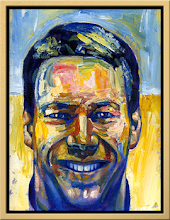HERNANDO DE SOTO: "I have found out as we've been called to work in different parts of the world that every place brings something new. I was very interested, for example, when we were contracted to start helping redesign Egyptian legislation regarding property rights for the poor. I always thought that traveling to a different culture would make a great difference. It makes a difference, but not a great difference, and that's also interesting. What's interesting is to find out that we Third Worlders have much more in common than we have in differences. The cultural differences that would make for an interesting program on the Discovery Channel or an article in National Geographic Magazine are cute, are interesting, but that's not where the basics are. The basics are that all of us Third Worlders have in common a very underdeveloped property rights system, a very underdeveloped legal apparatus, and that's what keeps you ahead of us. That's the part I look at. The fact that I'm able to find it in different cultures is first of all important to us because it indicates that there are basic principles that account for development, that there are general theories that one can bring together and that, therefore, there are solutions that one can devise on the basis of this information. But it's not the differences that make it interesting for me to go into any particular part of the Third World; it's the fact that we're so similar in spite of the fact that this might be manifested in different cultural forms.
"What we think is that the reason it isn't working in the developing world and the reason it isn't working in former communist nations is not because people are anticapitalist or people are antientrepreneurial, but that the infrastructure of laws that make the carrying of capital possible are simply not in place."
de Soto is president of the non-profit think-tank Instituto Libertad y Democracia based in Lima, Peru. Read more of de Soto's thoughts at the PBS' Commanding Heights website or in his books, The Mystery of Capital and The Other Path.





